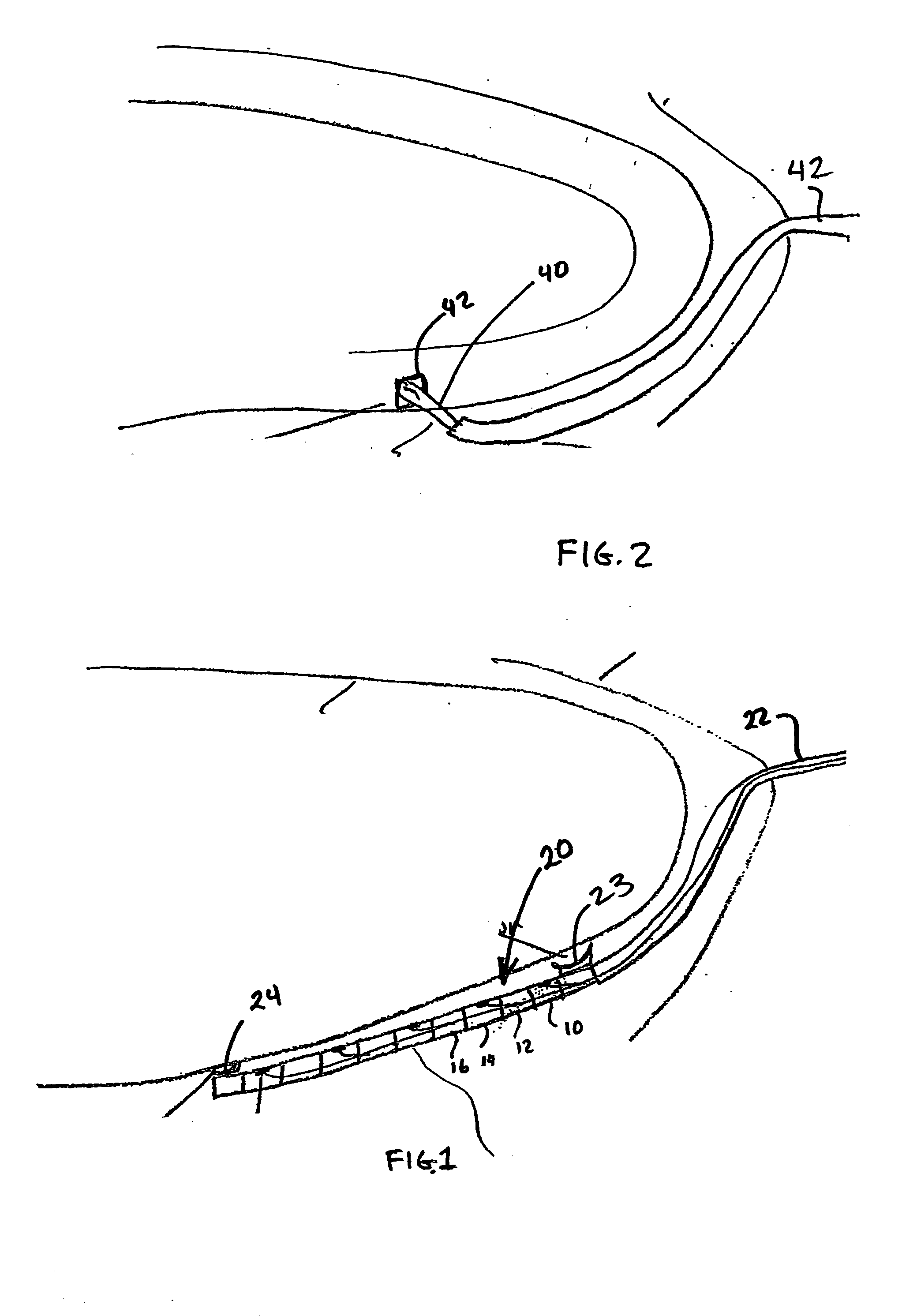Perficardial pacing lead placement device and method
a technology of perficardial pacing and lead placement, which is applied in the field of perficardial pacing lead placement devices and methods, can solve problems such as inability to readily address shortcomings
- Summary
- Abstract
- Description
- Claims
- Application Information
AI Technical Summary
Problems solved by technology
Method used
Image
Examples
Embodiment Construction
[0010]FIG. 1 shows a multiple link temporary pacing lead with electrode segments such as 10 and 14 separated by articulated insulators such as 12 and 16. Each electrode can be used to test the pacing parameters at the location associated with the electrode. It is desirable to determine the optimal pacing site especially for biventricular pacing. The articulated catheter 20 can be delivered to the posterior side of the heart and the right and left ventricle can each be accessed and paced. The distal anchor 24 can be a mechanical barb or a suction device to temporally fix the lead into position while the heart is tested. The lead may be stabilized in place with an optional proximal anchor 23 as well.
[0011]FIG. 2 shows a pacing lead with a barbed anchor that can be rotated in to attachment to the heart surface after placement on the posterior surface of the heart.
[0012] Taken as a system the catheter 20 of FIG. 1 can be used to explore and select the optimal pacing site. The pericard...
PUM
 Login to View More
Login to View More Abstract
Description
Claims
Application Information
 Login to View More
Login to View More - R&D
- Intellectual Property
- Life Sciences
- Materials
- Tech Scout
- Unparalleled Data Quality
- Higher Quality Content
- 60% Fewer Hallucinations
Browse by: Latest US Patents, China's latest patents, Technical Efficacy Thesaurus, Application Domain, Technology Topic, Popular Technical Reports.
© 2025 PatSnap. All rights reserved.Legal|Privacy policy|Modern Slavery Act Transparency Statement|Sitemap|About US| Contact US: help@patsnap.com


